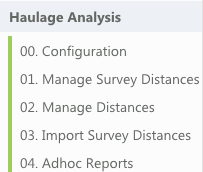
The table below lists the navigation menus that can be used for Haul Analysis.
| Menu | Description |
|---|---|
|
Haul Analysis |
The parent menu to place the related Haul Analysis menus. Typically this would be a Dashboard Tile page type where charts relating to Haul Analysis can be placed. |
|
Configuration
|
The configuration menu contains the Haul Analysis Category data that is used by the Haul Analysis process. It defines the data query which determines the filters and outputs to be used, and the data management queries to be used for the management of distances. These distance may be automatically retrieved from a fleet management system or manually entered. It is possible to define 10 distance fields. The mapping of the automatically retrieved distances to the defined distances occurs here, as does the mapping of the Survey Source and Destination fields for the manually entered survey distances. |
|
Manage Survey Distances |
The manage survey distances menu is used for the manual entry of surveyed distances for a defined source and destination combination. A list may be exported for the source and destination combination for survey to enter the calculated distance, which can then be imported into MiiNT and used when the distances are managed. This menu is optional. |
|
Manage Distances |
The aim of the Manage Survey Distance process is to create haulage data that has been extended with distance data, which can then be used as part of reporting for various analyses and costing activities. This survey distance data may be automatically retrieved from a fleet management system or manually entered. |
|
Import Survey Distances |
The import survey distances menu will be used for the importing of calculated survey distances. |
Create a navigation menu with a page type of Dashboard Tile. This will be the parent menu that the other Haul Analysis menus will be placed under.
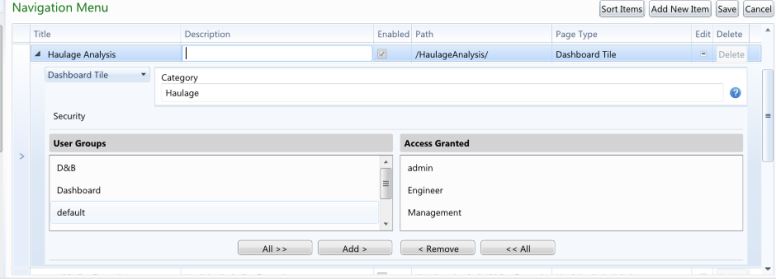
Please refer to the Managing Navigation Menu topic for information on how to manage navigation menus and move them around.
This menu may also be used to display any relevant charts.
Create a navigation menu with a page type of Haul Analysis Admin. This menu will be moved under the Haul Analysis menu.
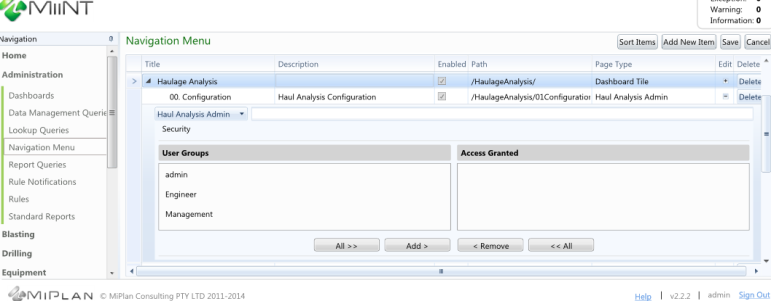
Please refer to the Managing Navigation Menu topic for information on how to manage navigation menus and move them around.
Create a navigation menu with a page type of Haul Analysis Survey Distances. This menu will be moved under the Haul Analysis menu.
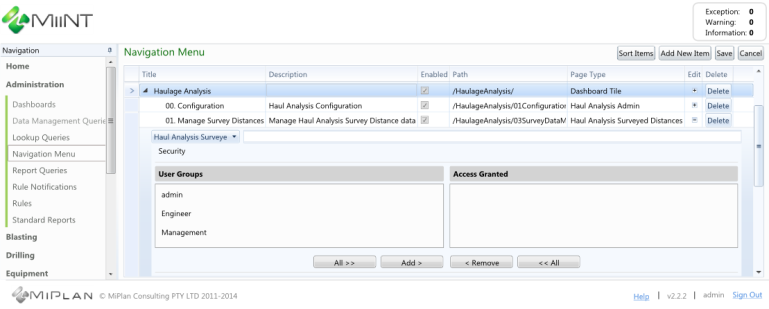
Please refer to the Managing Navigation Menu topic for information on how to manage navigation menus and move them around.
Note: This menu is optional and may not be needed if the distances are retrieve automatically from a fleet management system.
Create a navigation menu with a page type of Haul Analysis Management. This menu will be moved under the Haul Analysis menu.
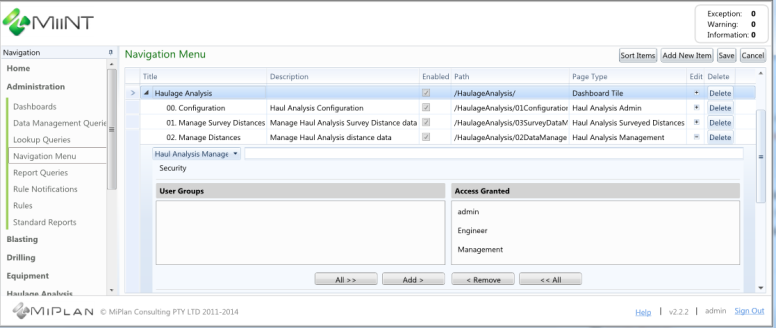
Please refer to the Managing Navigation Menu topic for information on how to manage navigation menus and move them around.
Create a navigation menu with a page type of Data Import. This menu will be moved under the Haul Analysis menu.
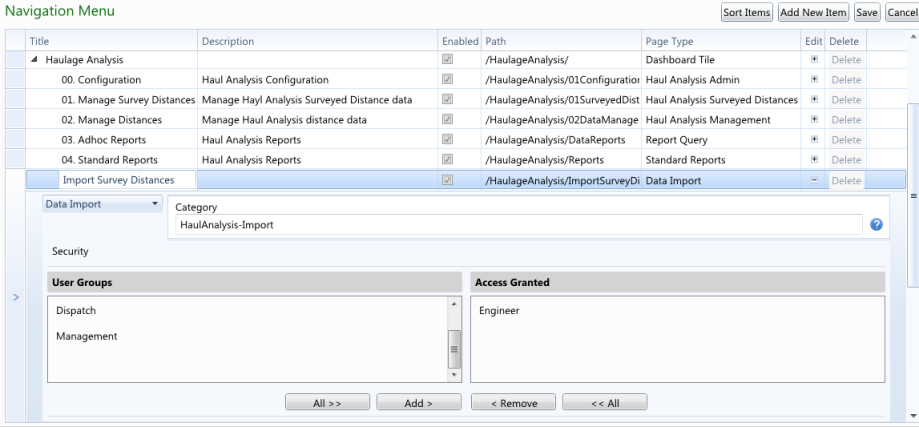
Please refer to the Managing Navigation Menu topic for information on how to manage navigation menus and move them around.